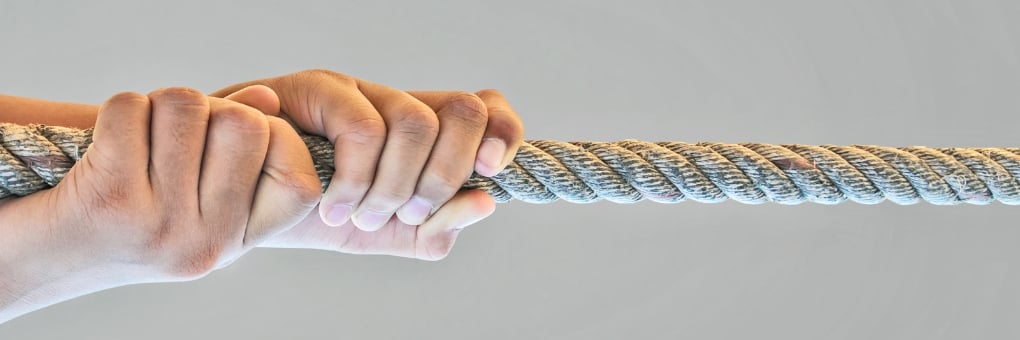Change is constant, and it is also one of the more difficult challenges we face. It can be hard to let go of the way things were, especially when we have no evidence that what lies ahead is better. But just like a rope, holding on can create as much discomfort as letting go. How can we know when to hold on and when to let go? Our comfort zone seems comfortable, after all. Here are three reasons that it holding on might be creating "rope burn," along with some suggestions on how to get through.
You Really Care
Say you built a rope swing when you were young. Your grandpa, dad, and mom did most of the work, of course, you were so young. Baked into every fiber of that swing is the hours of fun you got out of it, with your family coming together to make it. But now, with the hours of fun behind you, perhaps the rope has frayed or the tree has become a danger to the house. Or perhaps, you simply just miss the days that you all could create something together and play, and an ache builds in your heart when you look at it.
This is love, and from love, grief is born. The moment for swinging on that swing in that way has passed, and it's important to allow time to grieve.
One way to help heal from the pain is to look forward to the possibilities. The branch that once held the swing may house birds without its sway. The house can stand far longer without the threat of a tree toppling down. Or the swing itself can become upcycled as a new treasure for someone else to enjoy. Once we let go of swinging there as a thing of the past, we can still find other things to see in the future with our heads held high.
The Unknown is Scary
Let’s pretend you’re a trapeze artist. Every day you practice on the same rope. The rope has been rewound, of course, but you take care of it, tar it, and keep it in tiptop shape after every rehearsal. But on the day of the big show, you find that the rope has been switched for a reflective nylon to add to a new neon show they’ve started, and no one told you that they would be changing your rope. They assure you it is even stronger and has the same flexibility as your old twine, but it’s never been used before. The thought of using the unknown rope to perform your stunts is horrifying, and we cling to that old twine so tightly it hurts.
If we don’t know what is coming, the future can be terrifying . An unproven alternative to the tried-and-true might seem foolhardy. Even the words of trusted friends might not be enough.
One way to start moving forward is to consider who is advising you. How trustworthy are they? If these are your most trusted friends and teammates, and they have proven over and over that they haven't kept you from falling, they wouldn't put you at risk, then trusting in their words is a great first step. And if this proverbial rope is the only thing keeping you from falling, then in the final rehearsals you have, you can test it out for yourself, with the safety of a back-up rope of some sort. It can be hard to take the first steps, but little steps, with safety measures, can help us slowly, but surely, make our way to embracing what’s new.
Selfless Action
Perhaps there is a rope that you have no real attachment to personally. It’s there separate from you. But that rope supports your best friend in the world, and if it were to slip, they would never recover. Or, maybe, it’s supporting something that matters to you. You might not be affected, but something else or someone else you hold dear would. In that kind of situation, many of us would probably hold onto that rope so tightly that our hands start to cramp up.
Holding on to something to protect others is real. If letting go might put others at risk, many of us might shy away from that.
One way to reduce the strain might be to ask discerning questions. Taking the time to investigate your situation - are you carrying someone else's burden unnecessarily? Where does the accountability really lie? Is it yours to carry? Did they ask you to carry it? Do you need to take on all that weight on top of your own stresses? For how long? Can you share the burden with someone else? Maybe by sharing some of the weight with someone else or finding an end-date on the horizon to the time when you are holding the rope, you can ease your own discomfort.
The burn is real. Those are just three examples, you can probably think of others, where holding on, clinging too tightly to the past, can hurt just as much as stepping unprepared into the future. In each of these cases, there are ideas that may help move forward.
Whether you're looking through these words for comfort for yourself - "why am I holding on so tightly to the past?" or for someone else "why won't they let go of the past?", perhaps you've seen in these three examples that a desire to hold on to the past doesn't mean a resistance to change. It doesn't even mean a preference for rope burns. It just means that there's a real human, struggling with real human emotions. If you want to find out more, you can check out our change resources to help you find your path forward.
Thanks for demonstrating a little patience!








